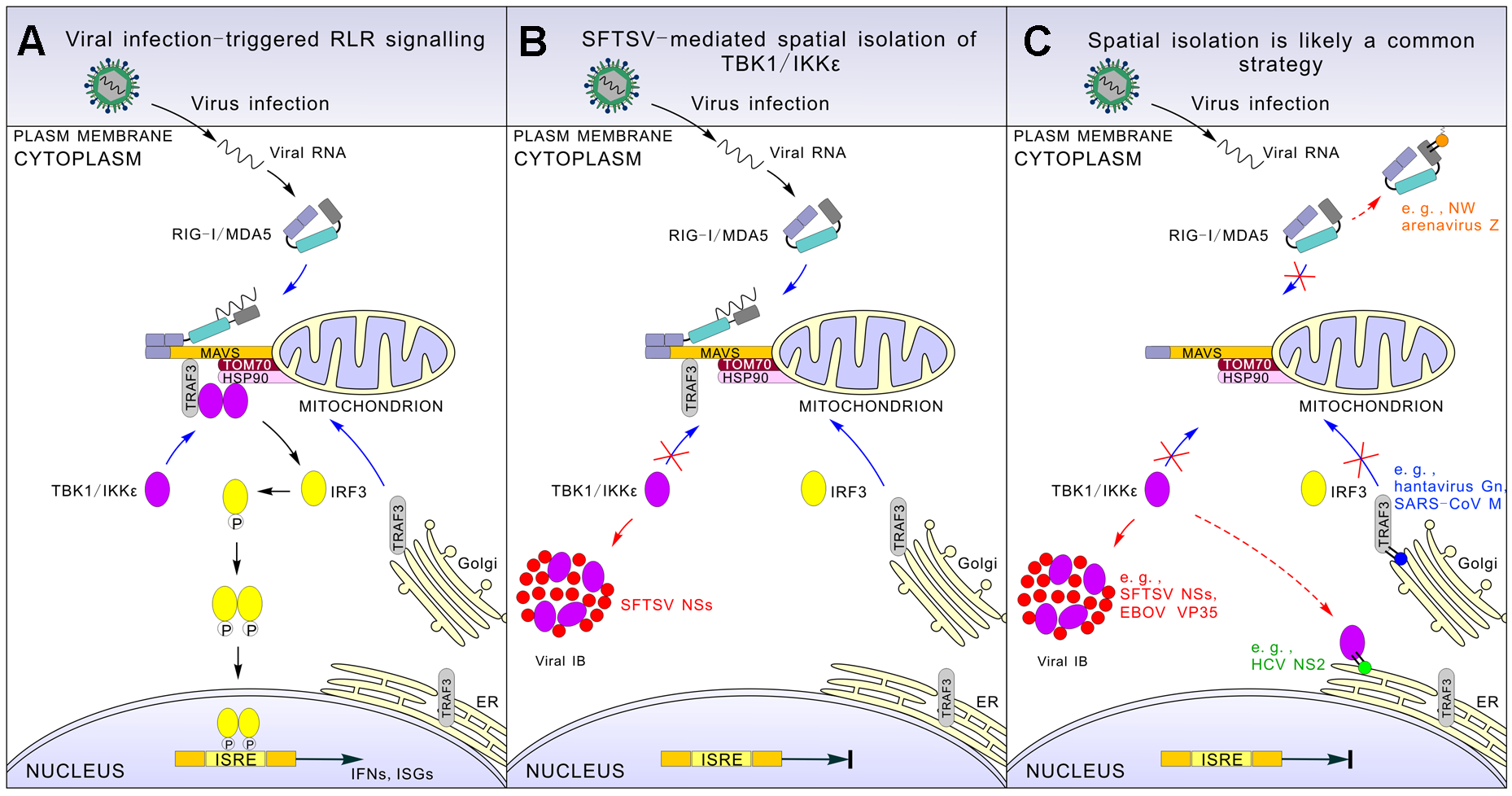Recently, the research group led by Prof. Hualin Wang and Prof. Zhihong Hu from WIV has made important progress on viral immune evasion strategies, results of which have been published in Journal of Molecular Cell Biology (5-Yr impact factor: 8.953; Ning et al., 2014).
Innate immune system is the first line of host defense against pathogen infections. Recent studies have suggested that mitochondria play a central role as the antiviral platform in innate immune signaling pathways, and mitochondrial relocations of many signaling molecules are required for antiviral complex assembly and subsequently the activation of transcription factors and expression of cytokines including interferons. During the study on severe fever with thrombocytopenia syndrome virus (SFTSV) - a deadly bunyavirus emerging recently, the group observed the formation of cytoplasmic eosinophilic inclusion bodies (IBs) in SFTSV-infected cells, which was suggested to be induced by the viral NSs protein. Furthermore, NSs captures host kinases TBK1/IKKε irreversibly into viral IBs and thus leads to a spatial isolation of the kinases from mitochondrial platforms, depriving TBK1/IKKε of the chance to participate in antiviral complex assembly and blocking the antiviral signalling pathway (Figure 1). The study proposes the new role of viral IBs as virus-built ‘jail’ imprisoning host factors and hence interfering with corresponding cellular processes, and presents a novel and likely also general mechanism of viral immune evasion through spatial isolation of critical signaling molecules from the mitochondrial antiviral platform.

Figure 1. A model for viral suppression of innate immunity via spatial isolation of signaling proteins.